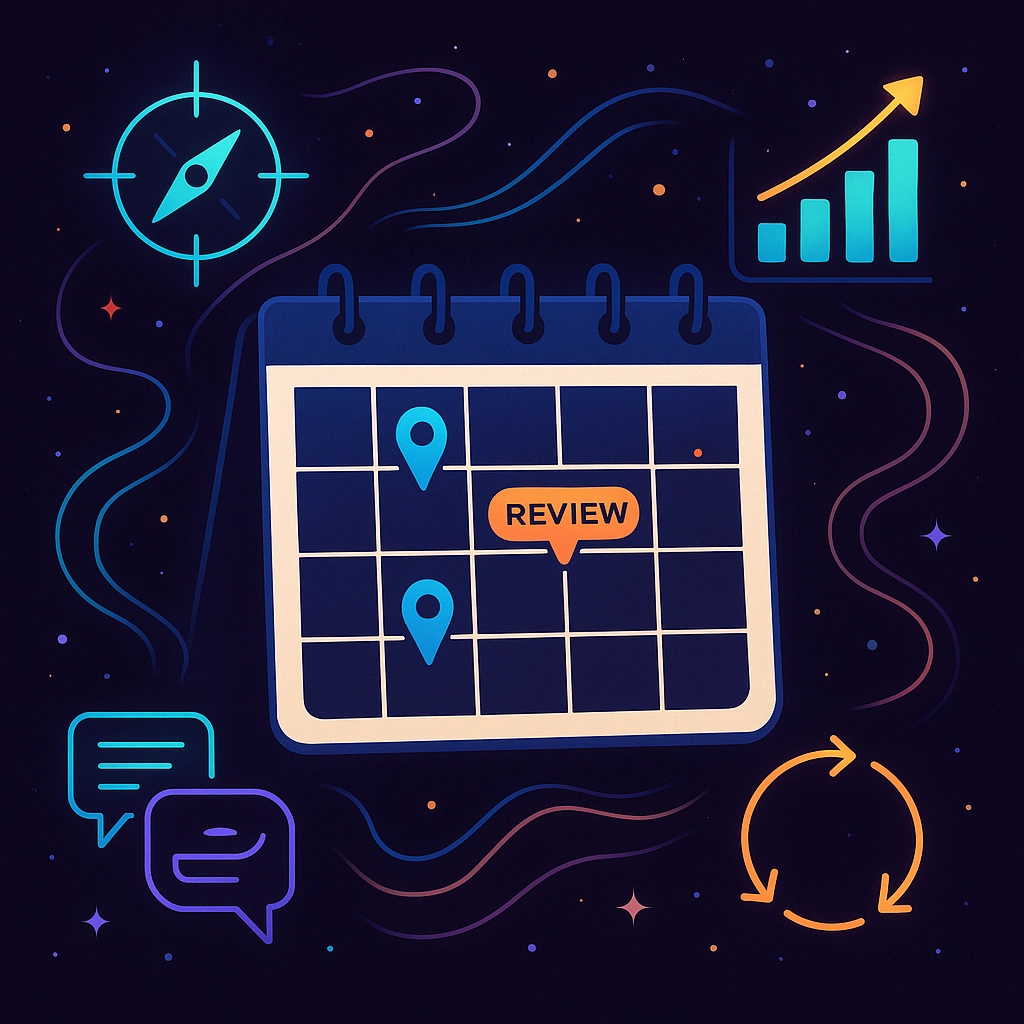Ever feel like you're just going through the motions at work? Like there's a disconnect between what drives you personally and what your company is trying to achieve? You're not alone. Research shows that companies with clearly articulated visions are 29% more likely to engage employees effectively, leading to a 20% increase in productivity. But here's the thing – alignment isn't something that just happens. It takes intentional effort.
When your personal purpose aligns with your organization's vision, magic happens. You wake up excited about work, your performance improves, and you become part of something bigger than yourself. Let's walk through five practical steps to make this alignment a reality.
Step 1: Get Crystal Clear on Your Organization's Vision
Before you can align anything, you need to truly understand where your organization is heading. This goes way deeper than memorizing the mission statement on the company website.
Start by digging into your company's strategic priorities, recent initiatives, and leadership communications. What are the big goals for the next 3-5 years? What problems is your organization trying to solve? What impact does it want to make in the world?

Take Microsoft's transformation under Satya Nadella as an example. They shifted from a "know-it-all" culture to a "learn-it-all" culture with the vision to "empower every person and every organization on the planet to achieve more." This wasn't just corporate speak – it fundamentally changed how employees approached their work and resulted in a 40% increase in market capitalization within two years.
Here's what you can do right now:
- Schedule a conversation with your manager about the company's strategic direction
- Review recent all-hands meetings or company updates
- Look at how your department's goals connect to broader organizational objectives
- Identify the core values that actually drive decision-making (not just what's posted on walls)
The key is understanding not just what your organization does, but why it exists and where it's heading.
Step 2: Discover Your Personal Purpose
This is where things get personal. Without a clear understanding of your own purpose, there's nothing meaningful to align with your organization's vision.
Your personal purpose is your "why" – what drives you, what you value most, and what kind of impact you want to make. Research shows that people who align their career with their personal values report a 15% increase in work engagement and are significantly more likely to feel satisfied and motivated.

Start with these reflection questions:
- What activities make you lose track of time?
- What issues in the world do you care most about?
- When do you feel most energized and fulfilled at work?
- What would you regret not doing if you looked back on your career in 20 years?
- What unique strengths do you bring to everything you do?
Don't rush this process. Your personal purpose might encompass financial goals, family priorities, social impact, creative expression, or professional growth. There's no right or wrong answer – just what's true for you.
Consider creating a personal mission statement. This becomes your strategic compass, helping you make decisions about opportunities, projects, and career moves. Keep it simple but meaningful. For example: "I exist to help others unlock their potential through compassionate leadership and innovative solutions."
Step 3: Find the Connection Points
Now comes the fun part – discovering where your personal purpose intersects with your organization's vision. This isn't about forcing a connection that doesn't exist, but rather finding authentic ways your individual aspirations can support company objectives while advancing your own mission.
The connections might not be obvious at first. If your personal purpose involves continuous learning and growth, how does that connect to your organization's innovation initiatives? If you're driven by helping others succeed, how does that support your company's customer service vision or employee development goals?

These connections often show up in several areas:
- Skill Development: How can pursuing company goals help you build capabilities you want to develop?
- Impact Opportunities: Where can you contribute to meaningful projects that align with your values?
- Relationship Building: How can your role help you build the professional network you want?
- Work-Life Integration: How can your company's culture and policies support your personal priorities?
For instance, if your organization is focused on digital transformation and your personal purpose involves creating innovative solutions, you might find alignment by leading a team through technology adoption while developing your leadership skills.
Remember, this alignment can evolve. What matters is finding genuine connections that feel authentic to both your purpose and your organization's direction.
Step 4: Set Goals That Serve Both Missions
Once you've identified the connection points, it's time to translate them into specific, measurable goals. The best aligned goals serve both your personal development and your organization's success simultaneously.
Think about it this way: instead of having separate personal goals and work goals, create integrated objectives that advance both missions. Research shows that clear goal alignment leads to better performance, higher engagement, and improved job satisfaction.
Here's how to structure these goals:
Make them specific and measurable: Instead of "get better at leadership," try "mentor three junior team members through our Q4 product launch while developing my coaching skills."
Connect to bigger outcomes: Show how achieving your goal supports team and organizational objectives. "Increase sales revenue by 10% through relationship-focused customer outreach" directly contributes to company growth while building your networking and communication skills.
Include development components: Each goal should help you grow in areas that matter to your personal purpose. If innovation drives you, build creative problem-solving opportunities into your objectives.

Set realistic timelines: Align your personal development timeline with organizational planning cycles. This makes it easier to get support and resources for your growth.
The key is ensuring your goals feel authentic to your purpose while clearly contributing to your organization's vision. When you can articulate how your success drives company success, you'll find more support for your development and more satisfaction in your achievements.
Step 5: Create Your Review and Adjustment System
Alignment isn't a one-time event – it's an ongoing process. Both your personal purpose and your organization's vision will evolve over time, so you need a system to keep them synchronized.
Schedule regular check-ins with yourself and your manager to assess how things are going. These reviews serve multiple purposes: celebrating progress, identifying obstacles, adjusting goals as needed, and ensuring continued alignment as priorities shift.
Here's what to include in your review process:
Monthly personal check-ins: Spend 30 minutes each month reflecting on whether your current work feels aligned with your purpose. What's energizing you? What's draining you? What adjustments might help?
Quarterly goal reviews: Assess progress on your aligned goals and make adjustments based on changing priorities or new opportunities. This is also a great time to identify new connection points between your purpose and evolving organizational objectives.
Annual alignment assessment: Take a deeper look at both your personal purpose and your understanding of the organizational vision. Have either evolved significantly? Do you need to update your approach to alignment?
Ongoing conversations: Keep dialogue open with your manager, peers, and mentors about your development and how it connects to organizational success. These relationships are crucial for maintaining alignment over time.

Remember, personal purpose often shifts every 3-7 years, similar to how organizational visions evolve. Regular reviews ensure you're not holding onto an alignment that no longer serves you or your company.
Making It Stick
Aligning personal purpose with organizational vision isn't just a nice-to-have – it's a competitive advantage for both you and your company. When you can connect your individual mission to your organization's bigger purpose, work becomes more meaningful, performance improves, and you become a more valuable contributor to your team's success.
The process takes time and intentional effort, but the payoff is significant. You'll find yourself more engaged, more motivated, and more successful in ways that matter to you personally while driving results that matter to your organization.
Start with step one today. Get curious about your organization's real vision and priorities. The rest will follow naturally as you build this powerful alignment that benefits everyone involved.

